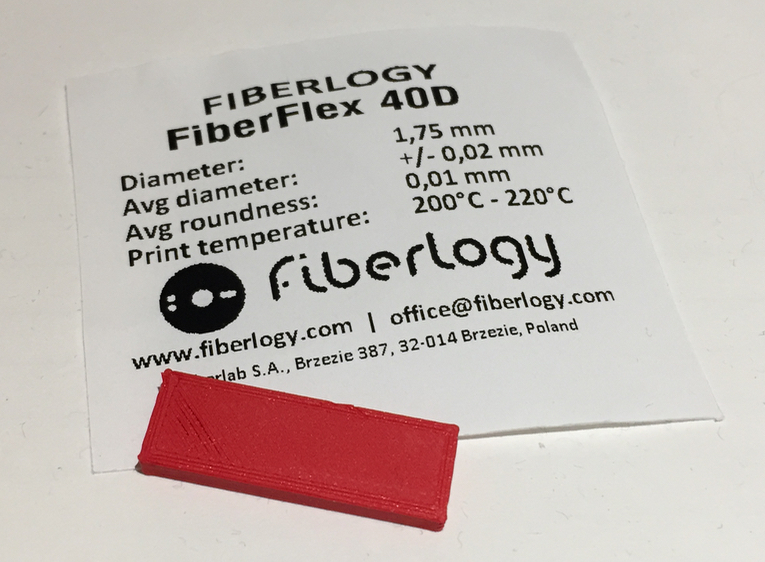
We obtained a small sample of Fiberlogy’s new FiberFlex 40D 3D printer filament and performed some basic testing.
I have to say first that flexible filament is among the most challenging to 3D print for a number of reasons, not the least of which is that the very flexibility of the material makes it difficult for many desktop 3D printers to properly feed it to the hot end – the material can bend!
The goal is to be able to print gaskets, flexible hinges or other bendable components to a functional object. That’s highly desirable because it dramatically increases the scope of possible objects printable by a desktop 3D printer.
Other flexible materials I’ve tried sometimes end up disastrously, with failed prints, jammed extruders, very sloppy output, etc. So my hopes are with Fiberlogy to see if their new product works.
The FiberFlex 40D is said to enable very fast 3D printing, which is quite unusual for flexible filaments. Typically they must be printed very slow, half or less of the normal speeds, to ensure the filament doesn’t bend and jam.
I believe they do so with FiberFlex 40D by making it a bit stiffer, but still flexible. Some flexible materials are like damp spaghetti, and there’s no hope of proper extrusion, but this stuff is “al dente”: it’s stiffer.
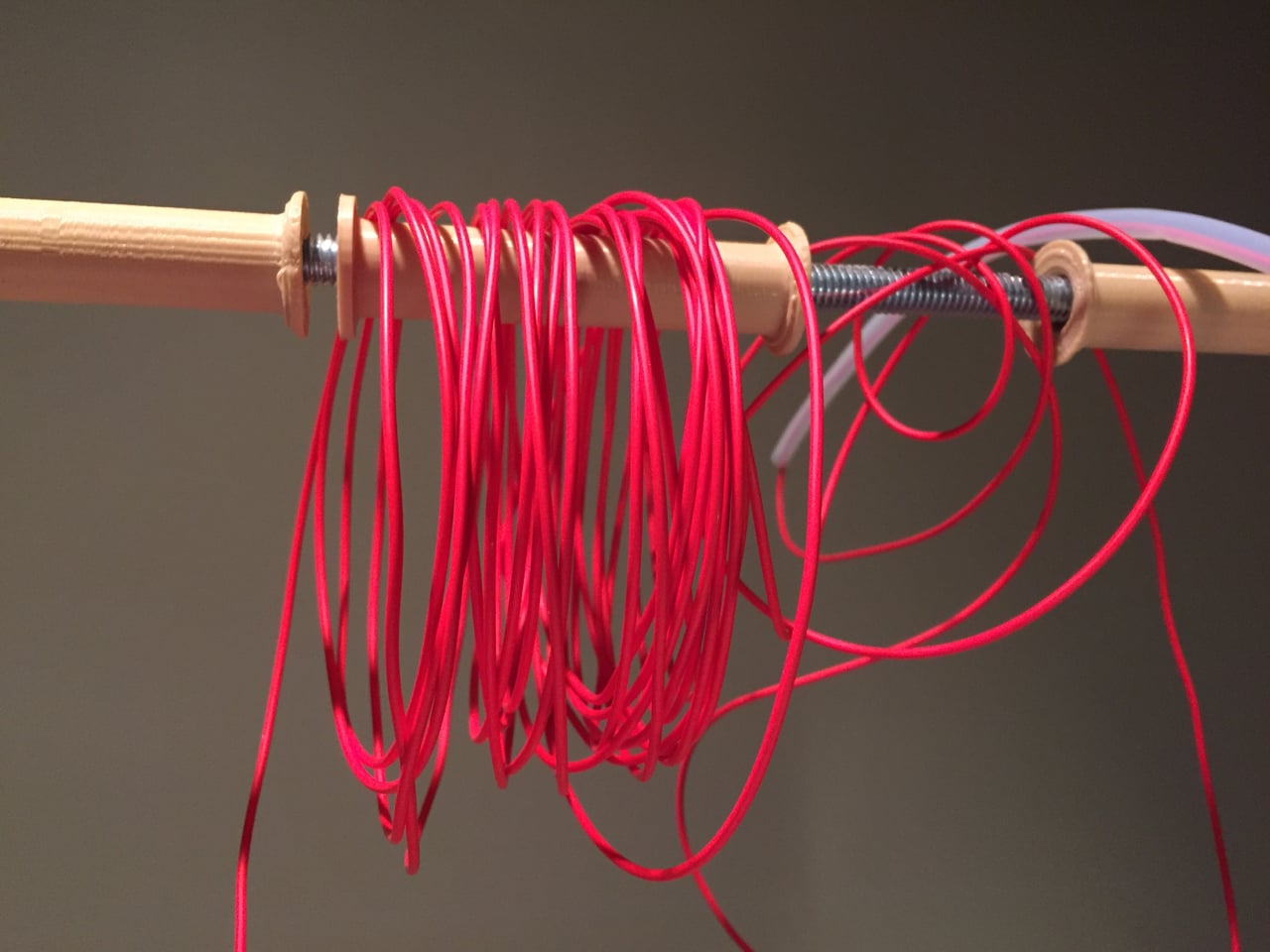
The small sample we received was not spooled, so it was loose. Normally loose filament can be hung above your 3D printer, but with flexible filament this is definitely not a good idea. Filament doesn’t roll over the hangar, instead it just tightens up and stalls. Do Not Do This! The best idea is to simply toss it on the floor and let the printer pull it up, or put in on a proper spool manually.
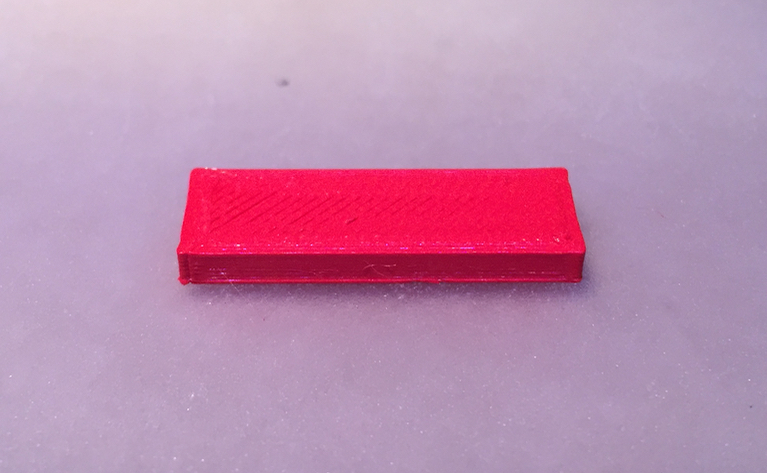
My first print came out very well. It’s a small flexible tab. This print was a little tricky to remove from my cold bed with removable adhesive print surface, but it came off relatively easily.
The tab print also tested Fiberlogy’s boast of printing at higher speed. This block was printed at a ridiculous 90mm/second, faster than Fiberlogy recommends (they say 75mm/second). I saw few issues with this speed, at least for an object of simple geometry like this.
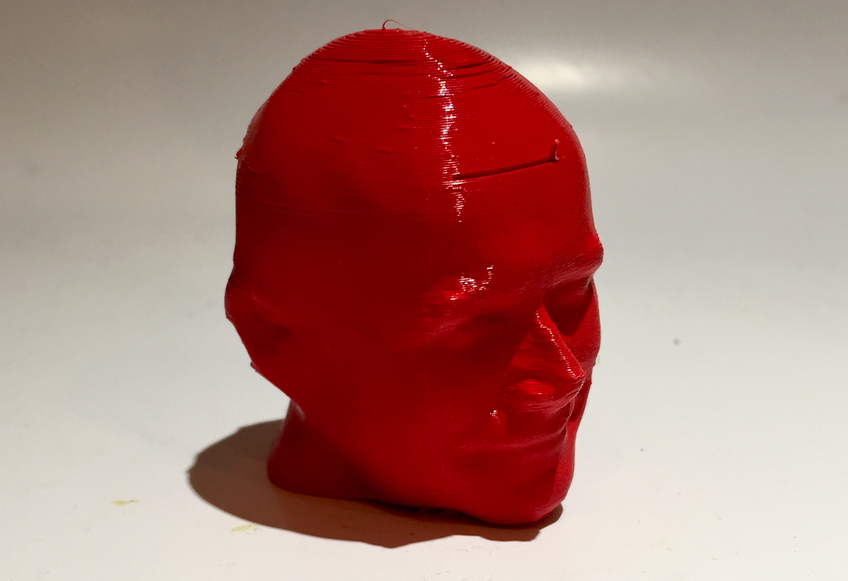
On to a more complex object. Here I printed my Robert Head test object and it came out reasonably well, although because the print temperature was a bit lower, the layer adhesion was poor.
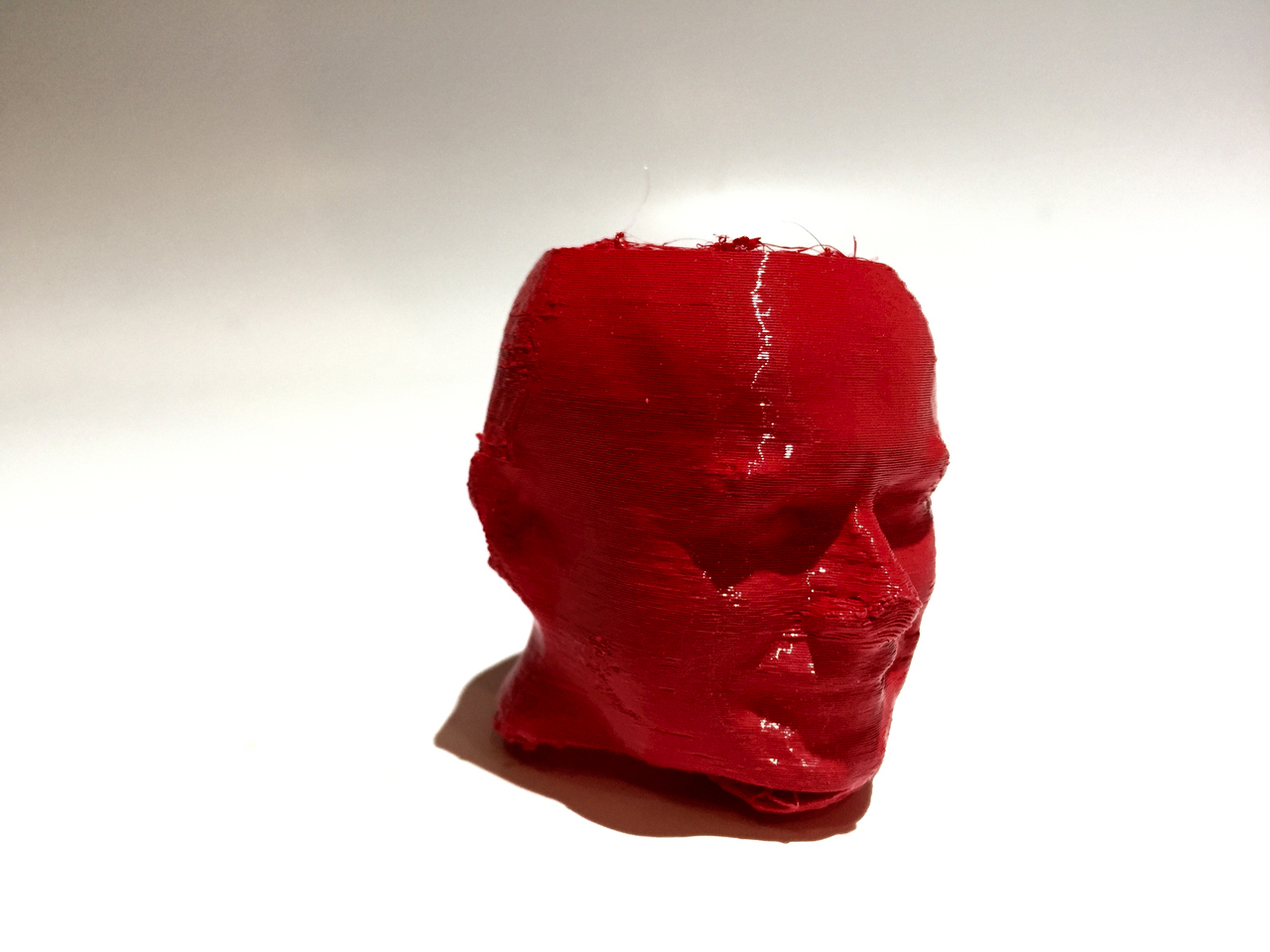
A second attempt at the Robert Head was much better, as the temperature was slightly higher. However, it was during this print that the small filament sample ran out, so poor Robert ended up with no top to his head.
Regardless, the prints are indeed flexy, and more than likely very suitable for all manner of applications.
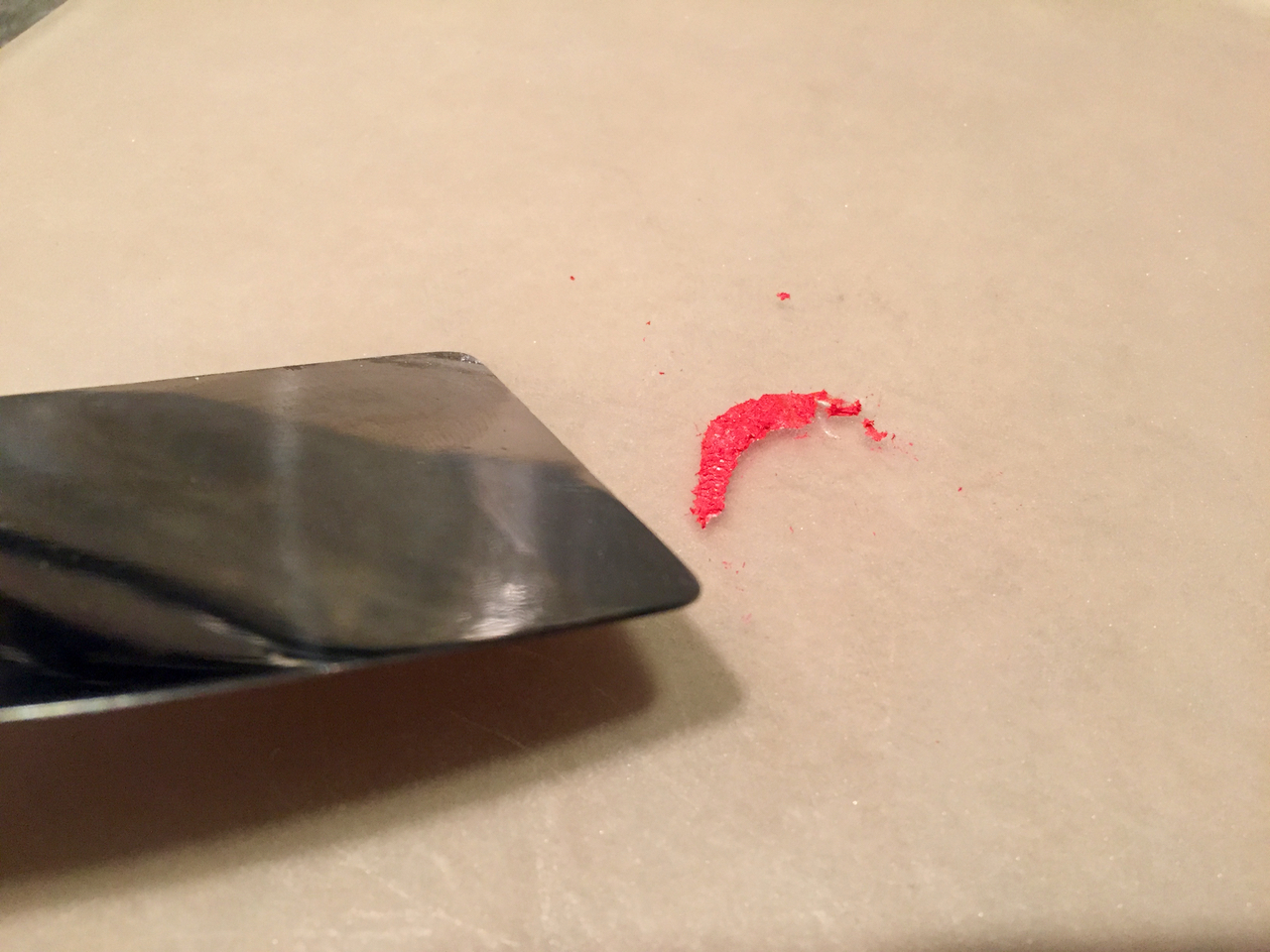
One problem I had was in bed adhesion. Well, actually, bed removal – this material sticks extremely well to my cold bed with removable adhesive surface. In fact, it sticks so well I actually could not remove the two Robert Heads without damaging them.
Normally, the removable surface is great for prints because you can quickly remove them by twisting it. The rigid prints then just pop off.
But this is FLEXIBLE filament.
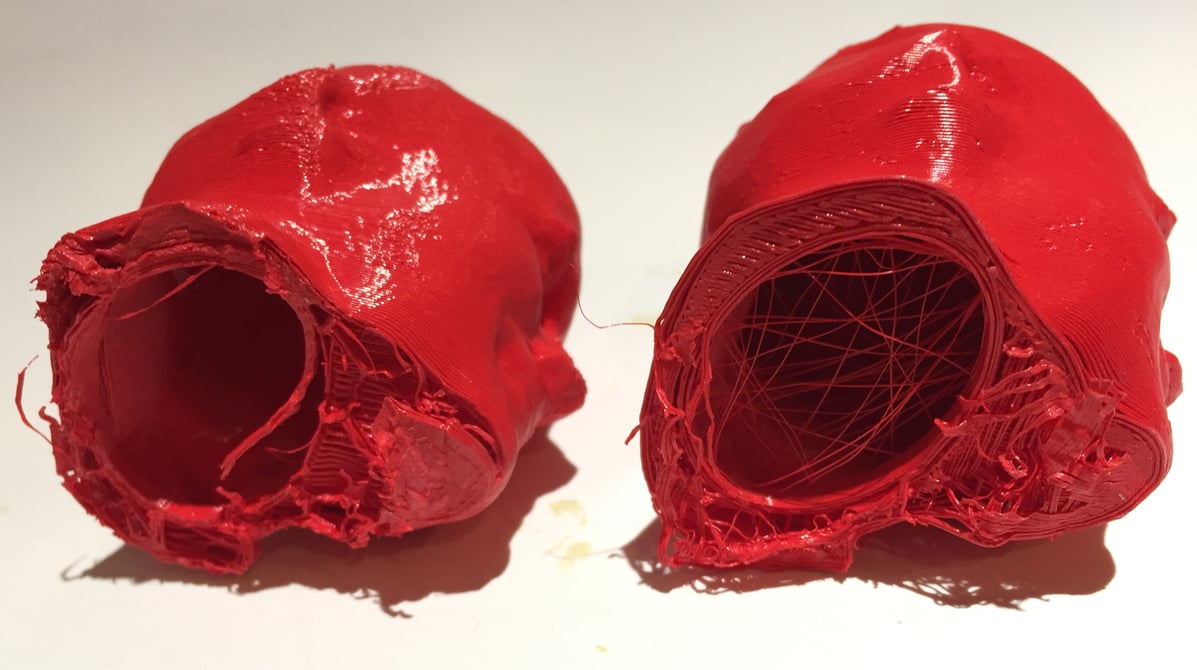
So they did not pop off. They did not peel off either. After a great deal of struggle, I finally managed to get them off, but Robert was slightly decapitated in the process. Yes, there was blood.
If doing this again, I would strongly recommend using a heated glass bed that may provide adhesion and release when complete. If you’re stuck with a cold bed, then I recommend some type of raft be printed to provide a more easily-removed first layer. And for goodness sake, wear thick gloves if scraping stuck filament!
That aside, FiberFlex 40D looks to be a pretty good product. The prints were quite good quality compared to other flexible material I’ve tried.
You can purchase some for yourself at Fiberlogy’s online store, where you will find 850g spools available at €43.50 (USD$48) each, in black, white, red, purple, orange or yellow colors.
Via Fiberlogy

